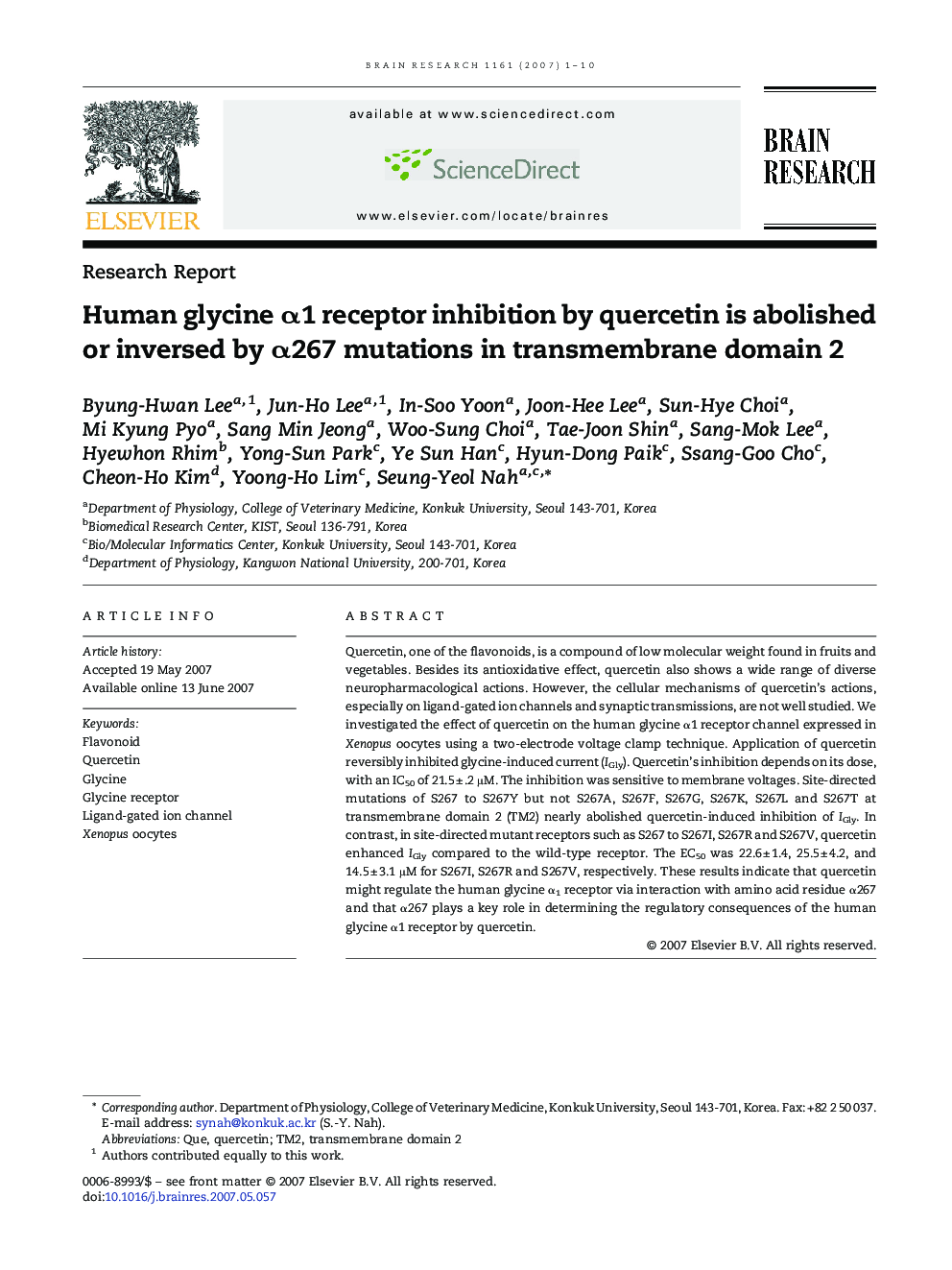| Article ID | Journal | Published Year | Pages | File Type |
|---|---|---|---|---|
| 4330749 | Brain Research | 2007 | 10 Pages |
Quercetin, one of the flavonoids, is a compound of low molecular weight found in fruits and vegetables. Besides its antioxidative effect, quercetin also shows a wide range of diverse neuropharmacological actions. However, the cellular mechanisms of quercetin's actions, especially on ligand-gated ion channels and synaptic transmissions, are not well studied. We investigated the effect of quercetin on the human glycine α1 receptor channel expressed in Xenopus oocytes using a two-electrode voltage clamp technique. Application of quercetin reversibly inhibited glycine-induced current (IGly). Quercetin's inhibition depends on its dose, with an IC50 of 21.5 ± .2 μM. The inhibition was sensitive to membrane voltages. Site-directed mutations of S267 to S267Y but not S267A, S267F, S267G, S267K, S267L and S267T at transmembrane domain 2 (TM2) nearly abolished quercetin-induced inhibition of IGly. In contrast, in site-directed mutant receptors such as S267 to S267I, S267R and S267V, quercetin enhanced IGly compared to the wild-type receptor. The EC50 was 22.6 ± 1.4, 25.5 ± 4.2, and 14.5 ± 3.1 μM for S267I, S267R and S267V, respectively. These results indicate that quercetin might regulate the human glycine α1 receptor via interaction with amino acid residue α267 and that α267 plays a key role in determining the regulatory consequences of the human glycine α1 receptor by quercetin.
